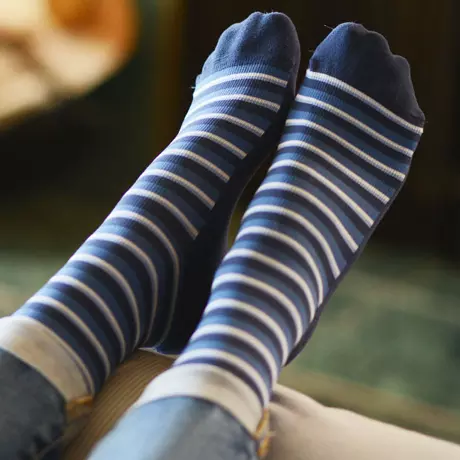Over the past several years we have provided our diabetic customers with top of the line diabetic shoes, inserts and care. Your trust and loyalty in us has been invaluable and has helped us to grow and thrive. However, the changing market has forced us to evaluate our ability to provide the quality care you deserve in a diabetic shoe. After much thought and consideration we have decided to discontinue our diabetic shoe program. Again, we thank you for your patronage and hope to serve you as a customer in any one of our many other specialty departments.
We would also like to thank our dedicated Pedorthist, Amy Stevens for her exemplary work here and genuine care for all our patients.
Union Prescription Center

Diabetic Socks
We carry a variety of diabetic socks at good prices. An important part of diabetic foot care and diabetes management, diabetic socks are made to keep feet dry, to reduce the risk of foot injury and enhance blood circulation. Of course not everyone with diabetes needs diabetic socks. Diabetics advised to wear diabetic socks are those who have had changes in the color or temperature of the skin on their feet. Have had any nerve damage, blisters, cuts, infections or irritations.
Those that have sweaty feet. And those that have been told they have a decreased pulse in the top of their foot or around the back of their ankle.
Diabetic socks address foot issues that sometimes accompany diabetes? . Most diabetic socks are made of moisture-wicking material, bamboo or wool and some are made with copper- or silver-infused yarn.
Moisture wicking material will pull moisture away from the foot allowing sweat to evaporate and help to lower the risk of fungal infections. Acrylic fibers do a better job than cotton for moisture-wicking. Bamboo and wool, both have natural antimicrobial properties while those with copper or silver have been shown to have anti-fungal properties. Typically diabetic socks are made without seams to reduce the risk of rubbing. Rubbing can lead to blisters and sores that can especially dangerous for someone with neuropathy or chronic hyperglycemia. It is good to mention that white socks can help to reveal draining of any wounds that may not be felt.
Diabetic socks should also have Non-Elastic Binding. They should stay up without being too tight restricting blood flow.
Extra padding can also be a plus for those that stand for long periods of time, are very active or enjoy sports.
Diabetic socks can be worn daily and washed frequently. Most will last around six months with regular wear and proper care. To increase their longevity, wash socks in a mesh undergarment bag in the washing machine and dry them on low heat. Use a sweater comb or shaver to remove fabric pills.

